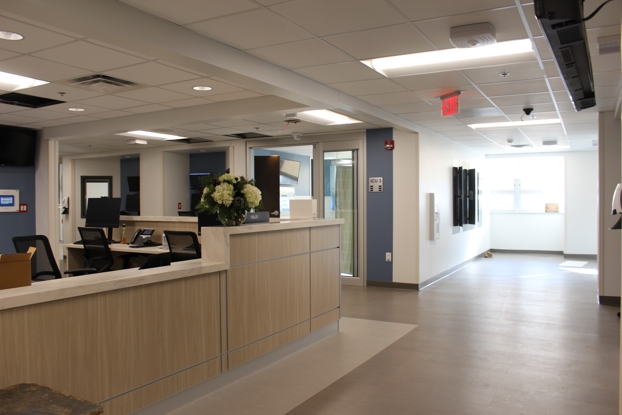
PAD (Peripheral Artery Disease)
Peripheral artery disease (PAD) is a chronic circulatory condition, which if left untreated can result in unnecessary limb amputations. PAD affects approximately 18 million US citizens, and 160,000 to 180,000 of those patients are estimated to undergo limb amputation this year.
Blockages can restrict blood flow to the muscles, causing muscle cramps, tightness or weakness, especially during activity. In the early stages of PAD, patients may not experience any symptoms. If PAD is not treated, though, blockages may continue to grow and restrict, or even completely block, blood flow. Symptoms include:
- Leg pain when walking
- Muscle pain or cramping in legs triggered by activity
- Leg numbness or weakness
- Coldness on lower leg or foot
- Sores on toes, legs or feet that won’t heal
- Change in color of legs
KNOW YOUR RISKS FOR PAD: (questionnaire form)
- Are you 50 years or older?
- Are you a smoker?
- Do you have family members with the disease?
- Have you been diagnosed with diabetes, high cholesterol or high blood pressure?
- Do you have kidney disease?
If you are answered YES to any of these questions, you may be at risk.
To learn more about Peripheral Arterial Disease/Supervised Exercise Therapy at DCH, call: 812-254-8895
-

Daviess Community Hospital Recognized for Excellence in Infant and Maternal Health (Washington, Ind.) – Daviess Community Hospital was recognized ...
Continue Reading -

Due to the solar eclipse, the following Daviess Community Hospital locations will be closed on Monday, April 8: CORE Center – 421 E Van Trees, ...
Continue Reading -

First Baby of 2024 Born at DCH Daviess Community Hospital Announces 1 st Baby of 2024 January 2, 2024 ( Washington, IN ) — Several babies were born in ...
Continue Reading -

DCH Acute Care Unit Now Open (Washington, IN) - Daviess Community Hospital is pleased to announce the opening of the DCH Acute Care Unit. Located on ...
Continue Reading -

INDIANA BREAST CANCER AWARENESS TRUST GRANTS AWARDED TO DAVIESS COMMUNITY HOSPITAL FOUNDATION December 11, 2023 (WASHINGTON, IN) – Daviess Community ...
Continue Reading -

DCH FOUNDATION RAISES OVER $4,000.00 FOR EXPANSION AND RENOVATION Washington, IN – Several walkers and runners braved the rainy October weather and ...
Continue Reading -

The Medxcel facilities management team at Daviess Community Hospital recently received the FMOS award which is given to organizations with a ...
Continue Reading -

Washington, IN Blesses 163rd Baby Box in Nation WASHINGTON, INDIANA (SEPTEMBER 5, 2023)- The community is welcome to attend the blessing of the West ...
Continue Reading -

Daviess Community Hospital was awarded $579,944.00 from the State for work to improve Maternal and Infant Health 08/16/2023 Daviess Community Hospital ...
Continue Reading -

Daviess Community Hospital was awarded $579,944.00 from the State for work to improve Maternal and Infant Health 08/16/2023 Daviess Community Hospital ...
Continue Reading








